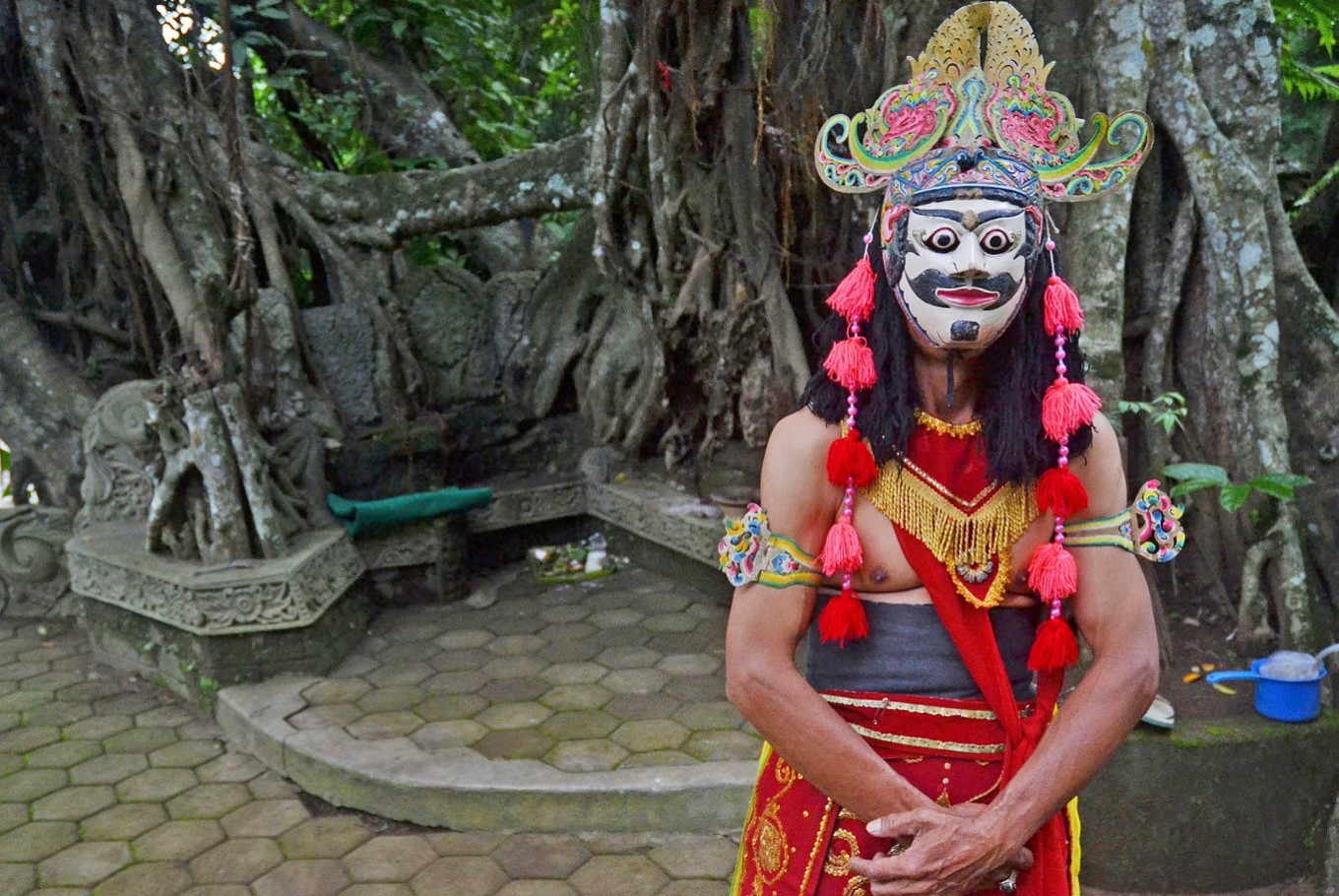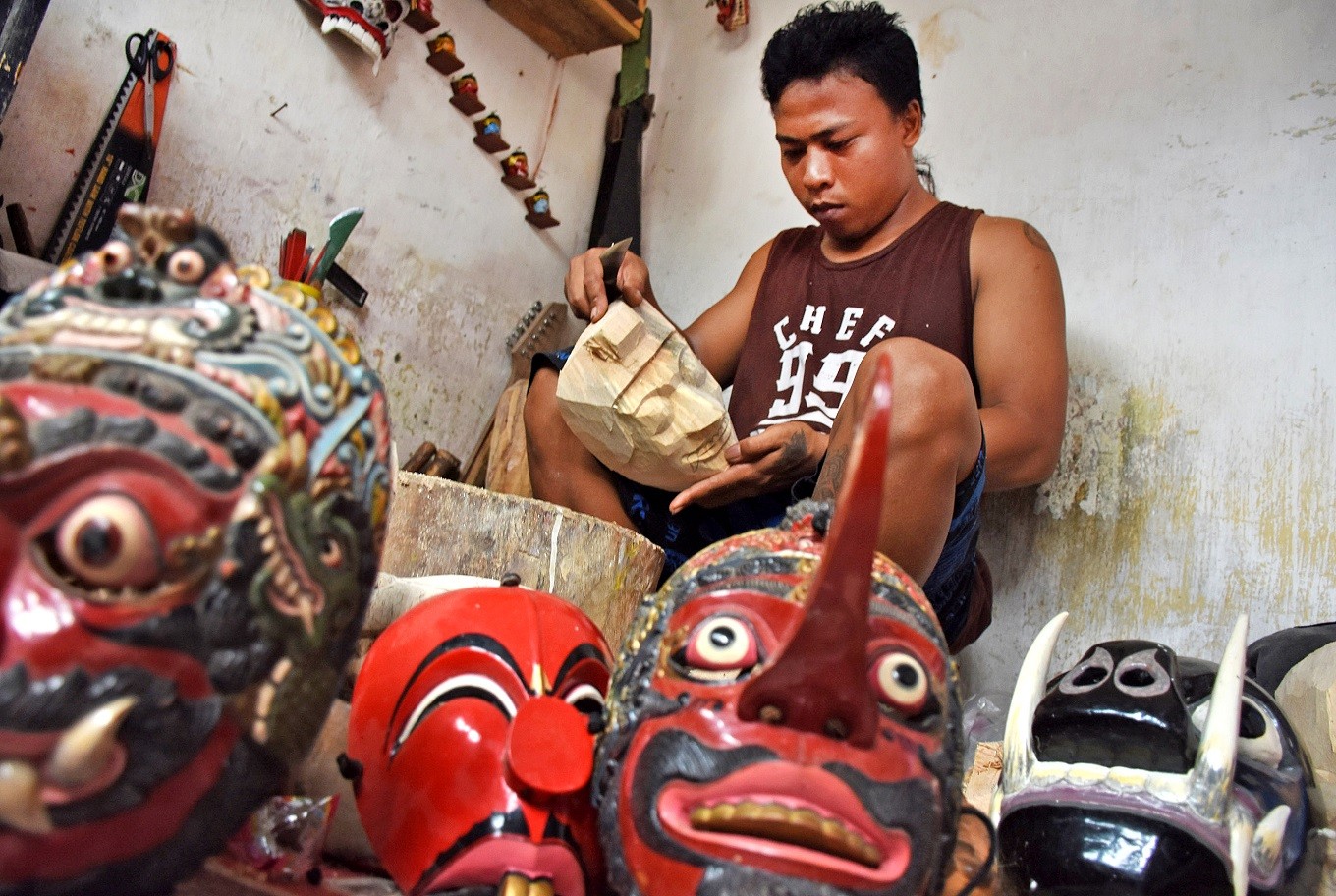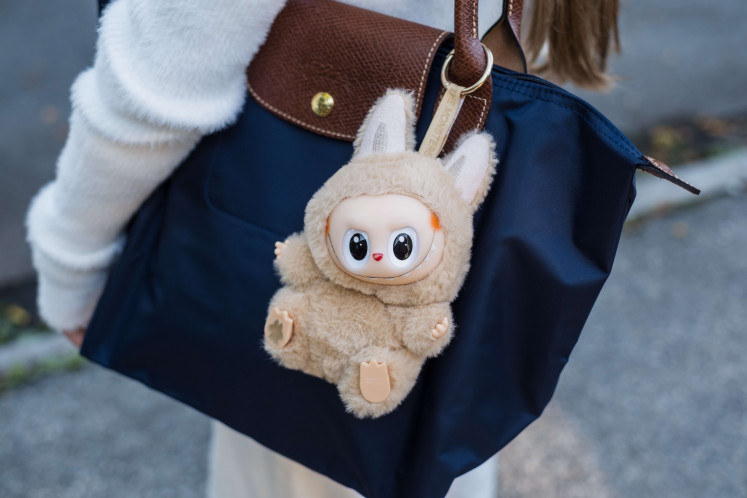Popular Reads
Top Results
Can't find what you're looking for?
View all search resultsPopular Reads
Top Results
Can't find what you're looking for?
View all search resultsThe lone struggle of Malang mask artists
Take a look at the intricate beauty of topeng Malangan and find out why this craft needs further appreciation.
Change text size
Gift Premium Articles
to Anyone
T
he sound of woodcarving tools at work can be heard from the road into Kedungmonggo village, Malang, East Java. This is the village that gave birth to artists and craftsmen of topeng Malangan (Malang-style masks) and a place where people can still see where Mbah Karimun, a senior mask dance instructor who died in 2010, handed down his skills to youngsters and children who lived around Kedungmonggo.
As a distinctive part of Malang culture, topeng Malangan is composed of mask dancing and mask craftsmanship. This art is synonymous with the classical East Java story of Prince Panji Asmoro Bangun. The wooden masks have different colors and shapes to depict the various characters of relevant episodes.
One of Mbah Karimun’s non-family students delving into topeng Malangan is Mahfud, 22.
“I’ve been learning here for 15 years, practicing the mask dance and then carving wooden masks,” said Mahfud, who lives just 100 meters from his late mentor’s house.
The masks, primarily meant for stage performances, are made from certain species of wood such as sengon (Albizia chinensis), mahogany, jackfruit and waru (Hibiscus tiliaceus.)
 The dancer: A Malang mask dancer poses in front of Mbah Karimun's tomb in Kedungmonggo. A mask dancer can also produce wooden masks in the village.(JP/Aman Rochman)
The dancer: A Malang mask dancer poses in front of Mbah Karimun's tomb in Kedungmonggo. A mask dancer can also produce wooden masks in the village.(JP/Aman Rochman)
“I don’t observe any ritual for mask crafting, unless this is requested, usually by mask dance artists,” Mahfud said.
It takes five days to finish one mask. The craftsmen use wood that has already been stored or dried for at least six months rather than that of newly felled trees. This material is then cut into pieces measuring 21 centimeters long and 16 cm wide. They are later shaped into faces according to the features of the characters to be represented.
Read also: Finding solutions to social conflicts through art
The expression and adornments of each character are first drawn with a pencil by following a relevant pattern.
Topeng Malangan have 76 characters. The mask surface gets four treatments. It is smoothed out, painted over to cover the pores, smoothed out again and then the final painting of the face.
Oil paint colors for mask faces and embellishments are applied according to the characters. Red is used for giants, evil entities and avarice; white for nobility, honesty, holiness and sublimity; yellow for female glory, green for chivalry; and golden yellow for knights in the royal family. It is important for the craftsmen to do the painting on a sunny day to ensure that the paint dries well.
The final phase of mask making is the coloring of facial details such as carving the forehead and brow, eyes, and lip motifs as well as putting on the mask-fastening strings.
 Colossal show: Hundreds of students participate in the Grebeg Jawa Mask Dance during an event at the Buyut Reni tomb cultural site in Malang, East Java, early in April. Reni was one of the dance maestros who created the Malang mask dance.(JP/Aman Rochman)
Colossal show: Hundreds of students participate in the Grebeg Jawa Mask Dance during an event at the Buyut Reni tomb cultural site in Malang, East Java, early in April. Reni was one of the dance maestros who created the Malang mask dance.(JP/Aman Rochman)
Today, very few young people in the village have the per- severance to keep working as a professional topeng Malangan dancer and craftsman to support their families. Widhi, one of the young craftsmen in his early 20s, only produces five to 10 masks monthly, which he sells for between Rp 80,000 (US$6) and Rp 350,000 per piece.
Read also: New W. Java museum celebrates motherhood Sunda style
Orders for masks usually come from dance artists and people who use them for home decorations. The difficulty in marketing these handicraft products is a major constraint on the continuity of their business. So far they have relied on orders and on purchases by people who are informed of the creations by word of mouth.
Unfortunately, the local administration has not yet developed topeng Malangan as a cultural asset and regional icon for economic and tourism promotion. They may need to learn about capitalizing on the potential from traditional culture from neighboring areas like Bali and Banyuwangi.
Consequently, the mask artists and craftspeople in Kedungmonggo struggle on their own to preserve the identity of their birthplace.











